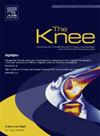Ideal remaining meniscus width and risk factors for decrease in meniscus width after reshaping surgery in pediatric patients with discoid lateral meniscus
IF 2
4区 医学
Q3 ORTHOPEDICS
引用次数: 0
Abstract
Purpose
This study aimed to determine the ideal remaining discoid meniscal width after reshaping surgery and to investigate the preoperative risk factors for changes in the meniscal width.
Methods
Twenty-nine pediatric patients (39 knees) who underwent arthroscopic reshaping for symptomatic discoid lateral meniscus (DLM) were retrospectively analyzed. MRI was performed postoperatively and at 6 months or 1–2 years. Changes in meniscal width were measured, and logistic regression and receiver operating characteristic (ROC) curve analyses identified risk factors and cut-off values.
Results
The meniscal width gradually decreased, particularly in the midbody (25.7 % at 6 months and 38.1 % at 1–2 years, postoperatively). Risk factors for width reduction included a complete-type DLM (β = 26.0, P = 0.036) and a smaller preoperative meniscal height (β = −4.51, P = 0.048). The ROC curve analysis indicated that a preoperative meniscal height of ≤ 3.3 mm and preserving a meniscal width of ≤ 8.5 mm after surgery may result in a residual meniscal width of less than 5 mm.
Conclusion
The ideal remaining meniscal width after reshaping surgery should be > 8.5 mm to minimize the risk of postoperative degeneration. Surgeons should consider preserving additional meniscal tissue, especially in patients with risk factors such as complete DLM or a meniscal height of less than 3.3 mm, to improve long-term joint preservation.
小儿盘状外侧半月板手术后理想剩余半月板宽度及半月板宽度减小的危险因素
目的本研究旨在确定手术后理想的盘状半月板剩余宽度,并探讨术前半月板宽度变化的危险因素。方法回顾性分析29例(39膝)儿童盘状外侧半月板(DLM)行关节镜下手术的临床资料。术后、术后6个月或术后1-2年分别行MRI检查。测量半月板宽度的变化,通过logistic回归和受试者工作特征(ROC)曲线分析确定危险因素和临界值。结果半月板宽度逐渐减小,尤以中半月板宽度减小最为明显(术后6个月25.7%,1 ~ 2年38.1%)。宽度减小的危险因素包括全型DLM (β = 26.0, P = 0.036)和术前半月板高度较小(β = - 4.51, P = 0.048)。ROC曲线分析显示,术前半月板高度≤3.3 mm,术后保留半月板宽度≤8.5 mm,可使半月板剩余宽度小于5 mm。结论手术后理想的半月板剩余宽度为:8.5 mm以减少术后退变的风险。外科医生应考虑保留额外的半月板组织,特别是对于具有完全DLM或半月板高度小于3.3 mm等危险因素的患者,以改善关节的长期保存。
本文章由计算机程序翻译,如有差异,请以英文原文为准。
求助全文
约1分钟内获得全文
求助全文
来源期刊

Knee
医学-外科
CiteScore
3.80
自引率
5.30%
发文量
171
审稿时长
6 months
期刊介绍:
The Knee is an international journal publishing studies on the clinical treatment and fundamental biomechanical characteristics of this joint. The aim of the journal is to provide a vehicle relevant to surgeons, biomedical engineers, imaging specialists, materials scientists, rehabilitation personnel and all those with an interest in the knee.
The topics covered include, but are not limited to:
• Anatomy, physiology, morphology and biochemistry;
• Biomechanical studies;
• Advances in the development of prosthetic, orthotic and augmentation devices;
• Imaging and diagnostic techniques;
• Pathology;
• Trauma;
• Surgery;
• Rehabilitation.
 求助内容:
求助内容: 应助结果提醒方式:
应助结果提醒方式:


